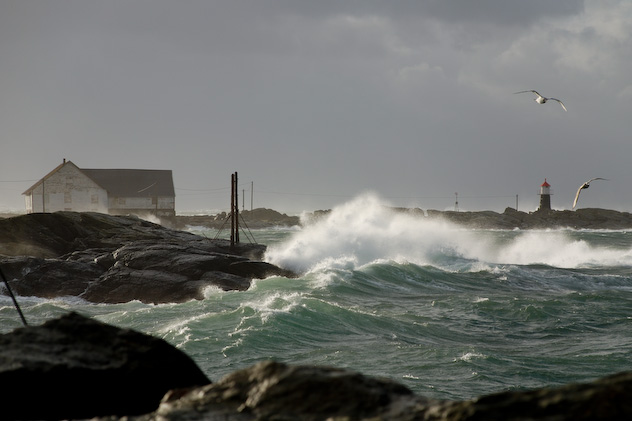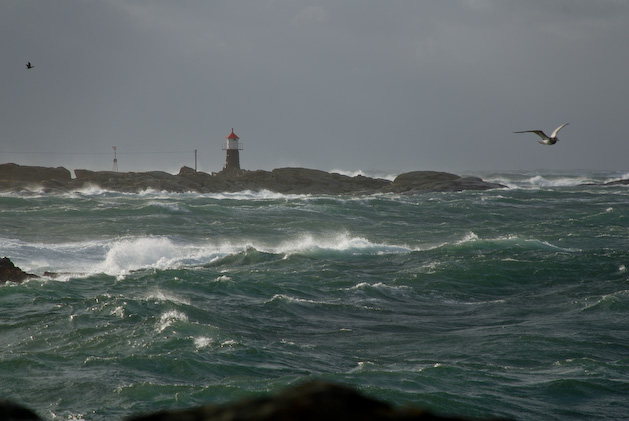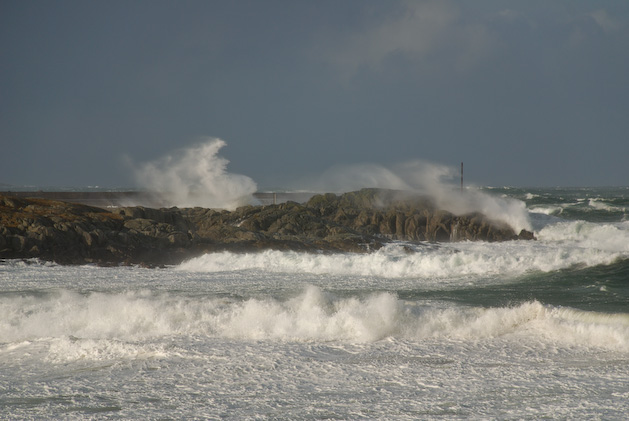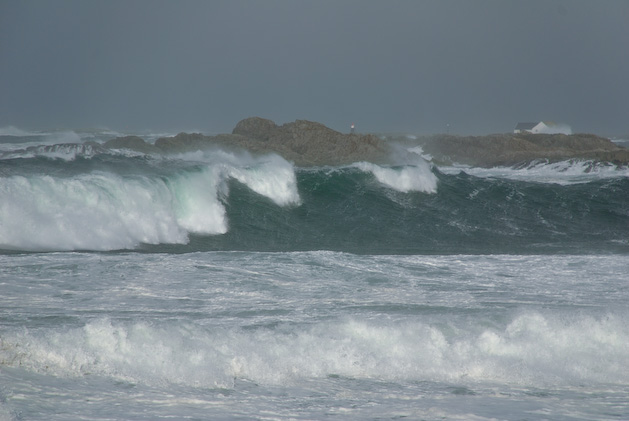Keep yourself safe!
The first thing you need to remember when taking pictures in conditions like this is to stay safe. Take your time to study the direction of the wind, where the waves break, how big they are and if they wash over places where you would normally go on a calm day. There is usually a certain rythm to the waves – try to figure it out and it will be easier to predict the big ones. BUT – do not rely on it and try to get closer. Always stay at a safe distance. You might suddenly get a big one that could drag you into the water. Another good thing is to never be alone. Should anything happen, there is someone to call for help. And while I am on that subject – do you know the emergency numbers? If you are a tourist in a foreign country, do you know how to get in touch with police, ambulance or the fire department? Do this research before you travel!
Keep your equipment safe
When you are close to the sea on a windy day like this, there will be a lot of salt and humidity in the air and both of these will destroy your camera unless you protect it. A cheap way to do it is to put a plastic bag over the camera and use a rubber band to secure the opening around your UV filter. And no matter what – changing lenses outside in that wind is out of the question. Do it inside a car or house. A better way is to have an underwater housing for your camera. There is a huge variety – all the way from a thick plastic bag that you seal and allows you to take pictures just below the surface to solid housings that can protect your camera down to 30 meters or more. And the prices vary as well. After a trip like this, make sure you clean all your equipment well. Whipe the equipment down the way the manufacturer recommends. That way your equipment will keep working for a long time.
Changes in the light
The light changes rapidly on days like these and you should always look for changes – suddenly the sun can break through and give you beautiful rays or a rainbow. But in general, you should expect low light conditions. So get ready to use the fastest lens you have. And even then, you might have to increase your ISO quite a bit. The colors on a day like this will typically be in the gray blues, white and green. But if the sun comes through the clouds, you might get a nice, warm light.
Layer up!
Dress warm and make sure the outer layer stops both wind and rain. You will probably end up being outside a lot longer than you first planned. Getting wet and cold when the wind is blowing can be dangerous. Hypothermia is definitely a possibility. Start with a layer next to your skin that can transport humidity. Then a shirt, a sweater and finally the wind and water proof layer. Keep you feet dry and your head covered. The only things that should be exposed is your face and hands.
Timing is everything
After a storm that has lasted for several days, you might get sunlight and big waves for a couple of more days even if the wind is a lot calmer so it should provide excellent conditions for photography. I have also experienced excellent conditions the day before the storm really hits, with the wind blowing towards the sea. This blows most of the salt in the air away from you. It helps to check the weather forecast and to learn a little bit about storms. As with all areas of photography – the more you know about the subject, the better you can plan and predict.
My gallery
The pictures in this little gallery were taken at two different places on Karmøy. One is close to the Åkrehamn molo (wave breaker) that protects the harbour there, the other is at the Ferkingstad beach. Both places are popular places to go to watch during a storm. The Ferkingstad beach has a parking place that is elevated and a secure place to watch from, so a lot of people drive out there, park and watch from their cars.












